
-
Company
-
Sectors
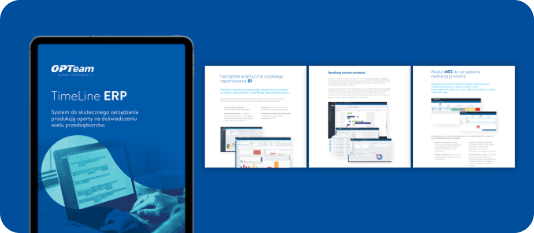
-
IT solutionsIT solutions
-
Cybersecurity

-
IT infrastructure

- Apollo ECI
- Data Center
- ECI Telecom
- Neptune ECI
- LAN and WiFi network systems
- Hosting services
- Backup systems
- OT network systems
- IT consulting
- Servers, arrays, networks
- Outsourcing services
- Guaranteed power supply systems
- Low-current installations
- Computer and printing equipment
- Service contracts
- Cloud services
- Virtualization
-
ERP and BI systems

-
Systems for production
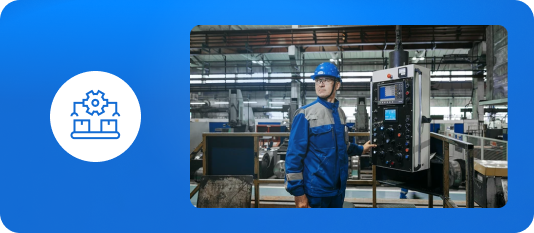
-
Warehouse management systems (WMS)
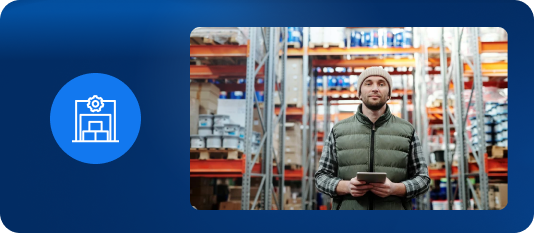
-
Personnel and HR systems

-
Systems for universities

- University Study Management System
- Teta EDU
- Student e-file
- Online Candidate Registration
- OPTiDrop App
- Student Extranet
- Electronic Attendance List
- System of Academic Career Offices
- Electronic Room Reservation System
- OPTicamp academic teacher electronic ID card
- OPTicamp electronic PhD student ID card
- OPTicamp electronic student ID
-
Workflow and applications

-
CMS system and websites

-
Chatbots

-
Web platforms and applications

-
Other technologies


-
-
Knowledge
-
Contact
RFID technology
Automatic Item and Object Identification
In just seconds, you can locate items, compile a list of fixed assets, verify available raw materials, identify service items, monitor access zones, and perform many other activities requiring control. RFID technology allows you to conveniently, quickly, and accurately conduct the required inspection of items, saving time and costs associated with manual inspections or the use of other methods or tools.


Reduce the time and costs of identifying and inspecting objects
Determining the location of goods storage.
Locating and counting fixed assets.
Inventory verification.
Assessment of the state of available resources.
Identification of components for service.
Conducting inventory work.
Equipment and tool management.
Monitoring of entrances and exits on the premises.
Carrying out occupational health and safety evacuations.
RFID technology is a solution for many industries

Location of Warehouse Raw Materials
Marking storage bays with RFID tags allows for the collection of information about materials placed and retrieved. When a semi-finished product is placed in the storage bay, the employee in the next work center receives a notification that the work item is ready for picking. For finished products, information about the order being ready for pickup is sent to the WMS system and also sent to the customer. This helps maintain production flow, prevents wasted time, and prevents product backlogs.
Picking goods for sale
RFID facilitates the accurate picking of orders containing large quantities of items. Each item that arrives in a package is identified according to its assigned tag, eliminating the risk of errors—missing items or duplicate accessories. The packed order passes through a gate, and the system verifies the quantity and type of items in the package. If any irregularities are detected, the order is placed on hold and does not leave the warehouse, preventing later and costly complaints.
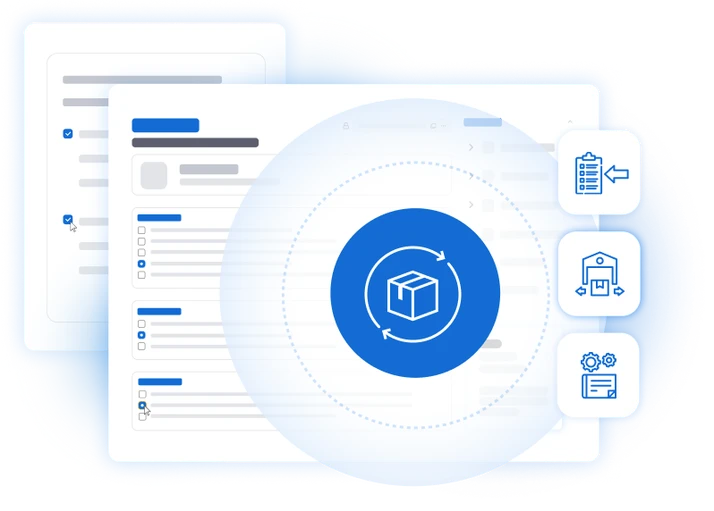

Inventory Taking in a Distributed Model
RFID makes inventory taking easier, especially in a distributed model. The type and quantity of fixed assets in individual rooms or in a warehouse can be quickly identified. It's also more convenient to conduct inventory and inventory reviews in large service facilities, such as hotels or restaurants. You can quickly determine whether assets are missing, are in the correct room, and require repairs.
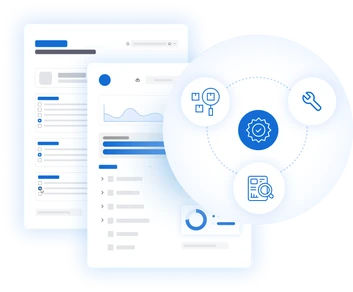
Verifying Product Authenticity
RFID technology allows us to determine the factory condition of a product. Thanks to tags embedded in individual components, a dealer or service technician performing routine warranty inspections can easily verify that the components remain original and have not been replaced with unauthorized manufacturer replacements during use.

Servicing and Component Replacement
RFID technology simplifies servicing and replacing damaged or worn-out components. Using the information stored on the tag, the technician can quickly retrieve data on maintenance and replacement work performed, as well as whether the work was performed by a qualified person within the scope of the contract.
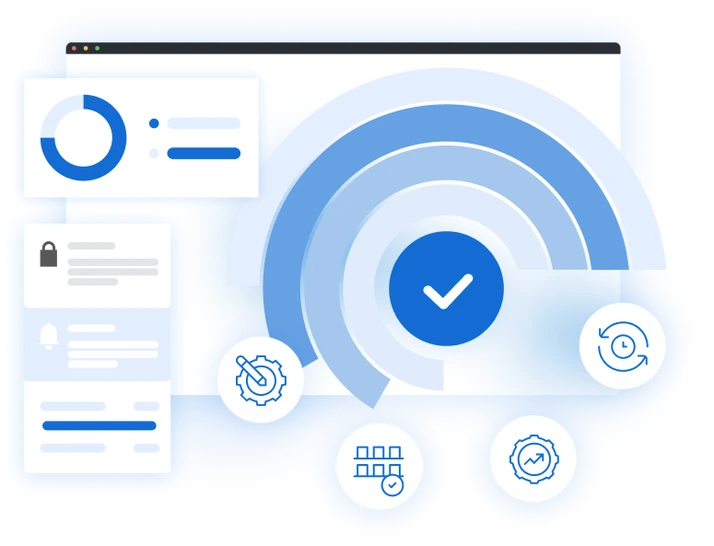
Transparency of Production Stages
RFID ensures transparency and traceability of all production stages. It complements information recorded in the MES system by an employee or directly from the machine. The tag, acting as a carrier, moves throughout the production hall with the object, and antennas on the work cells read the information contained on it regarding the completed order. This facilitates the verification of the duration of individual stages, the amount of work performed at a given time, and the proper use of materials in the production process.
Tool Management in Production
Tagging equipment in the tool room allows for quick verification of whether a given tool has been returned or is still in use. After a job is completed, it is also easier to locate equipment left outside the office and check for missing items. This information streamlines purchasing management and the disposal process. Authorized personnel receive data on the number of tools to be disposed of and the quantity required for an order.

RFID technology facilitates the identification and location of objects.
You can recognize objects in seconds, regardless of distance, surface area, or the number of components. This technology streamlines identification and control processes in many areas of business. The technology is used in industrial processes, logistics, warehousing, security, trade, and services. It facilitates inventory, maintenance, and control work. It supports occupational health and safety by designating access zones and organizing evacuations.

Data Storage
The ability to store more detailed information about an object on an RFID medium.
Data Editing
The ability to repeatedly edit data encoded on the medium to update it.
Registry
Information about saved objects and items is available in a single system.
Identification
Wireless data transmission that does not require direct contact with the object.
Discover the benefits of radio frequency identification of objects and items
Reading a large number of elements spread over a large area in just a few seconds.
More efficient and accurate object identification, saving time and associated costs.
Elimination of manually completed paper documentation in favor of an electronic register.
Eliminacja błędów, jak braki czy powielenia, które mogą wystąpić przy innych metodach identyfikacji.
Organize items efficiently, track them easily, and quickly identify their location.
More efficient performance of controlling work, ensuring greater transparency.
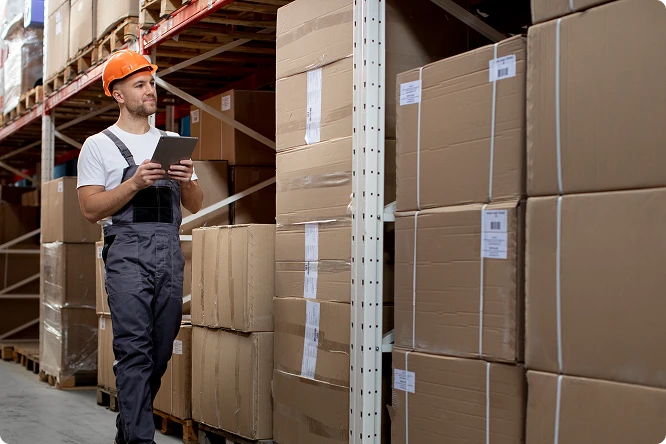
RFID enables rapid identification of multiple objects
RFID technology is used wherever efficient monitoring and precise, real-time identification of objects are required. It is ideal for large areas and distances, as well as for large numbers of items, as it can detect a single item or a larger group in just a few seconds. RFID identification is performed remotely and contactlessly, so direct contact is not required to identify a specific object. The entire process is continuous, and the captured information about the object is immediately available and ready for reading in the system.
Want to know more? Contact us
Let us know your needs and expectations, and our consultant will contact you. Together, we'll choose the best solutions for your business.
Polityka prywatności
Klauzula Informacyjna - przetwarzanie danych osobowych w OPTeam S.A.
Ochrona prywatności użytkowników Internetowych serwisów OPTeam SA jest dla nas bardzo ważna.
Niniejsza polityka zawiera informacje dotyczące gromadzonych danych oraz zasad ich przetwarzania i wykorzystywania we wszystkich serwisach www prowadzonych i utrzymywanych przez OPTeam SA. Wykorzystanie i zbieranie informacji o użytkownikach Internetowych serwisów ograniczane jest do niezbędnego minimum wymaganego do świadczenia przez OPTeam SA usług na najwyższym poziomie. Polityka prywatności zawiera informacje na temat narzędzi stosowanych przez OPTeam SA w celu zapewnienia jak największej wygody korzystania z Internetowych serwisów (cookies, logi systemowe) oraz o danych zbieranych przez podmioty zajmujące się analityką serwisów. Polityka określa ponadto w jaki sposób chronimy Twoje dane, jakie prawa Ci przysługują oraz w jaki sposób możesz je wykonywać. Jednocześnie wskazane zostały narzędzia służące do zarządzania wyrażonymi przez Ciebie zgodami.
Jakie dane zbieramy?
OPTeam dokłada wszelkich starań, żeby Internetowe serwisy informacyjne były wygodne w użyciu. Dla zwiększenia wydajności serwisów stosowana jest technologia anonimowych cookies oraz pobierane są dane statystyczne o najczęściej poszukiwanych, za pomocą wyszukiwarki frazach, dzięki czemu aktualizowana jest na bieżąco nawigacja serwisu, żeby wyszukiwanie treści było wygodne i intuicyjne.
Przetwarzamy dane, żeby:
- dopasować prezentowane treści do potrzeb i zainteresowań użytkowników,
- zapewnić bezpieczeństwo usług,
- prezentować informacje o produktach i usługach dopasowane do potrzeb i zainteresowań użytkowników,
- dokonywać pomiarów, które pozwalają udoskonalać oferowane produkty i usługi.
Cookies (ciasteczka).
Serwis nie zbiera w sposób automatyczny żadnych informacji, z wyjątkiem informacji zawartych w plikach cookies.
- Pliki cookies (tzw. "ciasteczka") stanowią dane informatyczne, w szczególności pliki tekstowe, które przechowywane są w urządzeniu końcowym Użytkownika Serwisu i przeznaczone są do korzystania ze stron internetowych Serwisu. Cookies zazwyczaj zawierają nazwę strony internetowej, z której pochodzą, czas przechowywania ich na urządzeniu końcowym oraz unikalny numer.
- Podmiotem zamieszczającym na urządzeniu końcowym Użytkownika Serwisu pliki cookies oraz uzyskującym do nich dostęp jest OPTeam SA, Tajęcina 113, 36-002 Jasionka.
- Pliki cookies wykorzystywane są w celu:
- dostosowania zawartości stron internetowych Serwisu do preferencji Użytkownika oraz optymalizacji korzystania ze stron internetowych; w szczególności pliki te pozwalają rozpoznać urządzenie Użytkownika Serwisu i odpowiednio wyświetlić stronę internetową, dostosowaną do jego indywidualnych potrzeb;
- tworzenia statystyk, które pomagają zrozumieć, w jaki sposób Użytkownicy Serwisu korzystają ze stron internetowych, co umożliwia ulepszanie ich struktury i zawartości
- utrzymanie sesji Użytkownika Serwisu (po zalogowaniu), dzięki której Użytkownik nie musi na każdej podstronie Serwisu ponownie wpisywać loginu i hasła.
- W ramach Serwisu stosowane są dwa zasadnicze rodzaje plików cookies: "sesyjne" (session cookies) oraz "stałe" (persistent cookies). Cookies "sesyjne" są plikami tymczasowymi, które przechowywane są w urządzeniu końcowym Użytkownika do czasu wylogowania, opuszczenia strony internetowej lub wyłączenia oprogramowania (przeglądarki internetowej). "Stałe" pliki cookies przechowywane są w urządzeniu końcowym Użytkownika przez czas określony w parametrach plików cookies lub do czasu ich usunięcia przez Użytkownika.
- W ramach Serwisu stosowane są następujące rodzaje plików cookies:
- "niezbędne" pliki cookies, umożliwiające korzystanie z usług dostępnych w ramach Serwisu, np. uwierzytelniające pliki cookies wykorzystywane do usług wymagających uwierzytelniania w ramach Serwisu;
- pliki cookies służące do zapewnienia bezpieczeństwa, np. wykorzystywane do wykrywania nadużyć w zakresie uwierzytelniania w ramach Serwisu;
- "wydajnościowe" pliki cookies, umożliwiające zbieranie informacji o sposobie korzystania ze stron internetowych Serwisu;
- "funkcjonalne" pliki cookies, umożliwiające "zapamiętanie" wybranych przez Użytkownika ustawień i personalizację interfejsu Użytkownika, np. w zakresie wybranego języka lub regionu, z którego pochodzi Użytkownik, rozmiaru czcionki, wyglądu strony internetowej itp.;
- "reklamowe" pliki cookies, umożliwiające dostarczanie Użytkownikom treści reklamowych bardziej dostosowanych do ich zainteresowań.
- W wielu przypadkach oprogramowanie służące do przeglądania stron internetowych (przeglądarka internetowa) domyślnie dopuszcza przechowywanie plików cookies w urządzeniu końcowym Użytkownika. Użytkownicy Serwisu mogą dokonać w każdym czasie zmiany ustawień dotyczących plików cookies. Ustawienia te mogą zostać zmienione w szczególności w taki sposób, aby blokować automatyczną obsługę plików cookies w ustawieniach przeglądarki internetowej bądź informować o ich każdorazowym zamieszczeniu w urządzeniu Użytkownika Serwisu. Szczegółowe informacje o możliwości i sposobach obsługi plików cookies dostępne są w ustawieniach oprogramowania (przeglądarki internetowej).
- Operator Serwisu informuje, że ograniczenia stosowania plików cookies mogą wpłynąć na niektóre funkcjonalności dostępne na stronach internetowych Serwisu.
- Pliki cookies zamieszczane w urządzeniu końcowym Użytkownika Serwisu i wykorzystywane mogą być również przez współpracujących z operatorem Serwisu reklamodawców oraz partnerów.
- Więcej informacji na temat plików cookies dostępnych jest pod adresem www.wszystkoociasteczkach.pl lub w sekcji "Pomoc" w menu przeglądarki internetowej.
- Strona korzysta z narzędzi analitycznych Google Tag Manager należących do Google LLC, 1600 Amphitheatre Parkway, Mountain View, CA 94043, Stany Zjednoczone, które pozwalają monitorować działania (tzw. zdarzenia) wykonywane przez Ciebie podczas wizyty na Stronie, takie jak np.: kliknięcie w przycisk, przesłanie formularza kontaktowego, pobranie pliku. W tym celu wykorzystywane są pliki cookies Google LLC dotyczące usługi Google Tag Manager. Szczegółowe informacje związane z przetwarzaniem danych przez Google Analytics są udostępnione przez Google na stronie: https://support.google.com/tagmanager/answer/9323295?hl=pl.
- Strona korzysta z narzędzi analitycznych Google Analytics należących do Google LLC, 1600 Amphitheatre Parkway, Mountain View, CA 94043, Stany Zjednoczone, które zbierają informacje na temat Twoich odwiedzin Serwisu, takie jak: wskazanie stron, które wyświetliłeś, czas, jaki spędziłeś na stronie czy przejścia pomiędzy poszczególnymi stronami. W tym celu wykorzystywane są pliki cookies Google LLC dotyczące usługi Google Analytics. Szczegółowe informacje związane z przetwarzaniem danych przez Google Analytics są udostępnione przez Google na stronie: https://support.google.com/analytics/answer/6004245.
- Strona korzysta z narzędzi analitycznych Google Search Console należących do Google LLC, 1600 Amphitheatre Parkway, Mountain View, CA 94043, Stany Zjednoczone, które pomagają monitorować, utrzymywać i rozwiązywać problemy związane z obecnością witryny w wynikach wyszukiwania Google. Szczegółowe informacje związane z przetwarzaniem danych przez Google Search Console są udostępnione przez Google na stronie: https://support.google.com/webmasters/answer/9128668?hl=pl. Wszelkie pozostałe informacje związane z prywatnością i bezpieczeństwem danych gwarantowanych przez Google, można znaleźć pod adresem: https://policies.google.com/privacy?hl=pl.
- Serwis korzysta z narzędzia analitycznego HotJar należącego do HotJar, Level 2, St Julian’s Business Centre 3, Eliza Zmmit Street, St Julian’s ST 1000, Malta, które śledzi Twoje zachowanie podejmowanie w obrębie Serwisu. W tym cellu wykorzystywane sa pliki cookies. Z pomocą HotJar analizowane są zachowania Użytkownika, tj. czas spędzony na poszczególnych stronach, przyciski, w które klika, linki, z których korzysta itp. Więcej informacji odnajdziesz w polityce prywatności HotJar: https://www.hotjar.com/legal/policies/privacy.
- Z narzędzia lead generation Bazo, które identyfikuje ruch na stronie (wizyty na podstronach serwisu). Narzędzie należy do Bazo Sp. z o.o., ul. Bohdana Dobrzańskiego 3, 20-262 Lublin, Regon: 364959893, NIP: 9462661611. Szczegółowe informacje związane z przetwarzaniem danych przez Google Analytics są udostępnione przez Google na stronie: https://bazo.io/pl/polityka-prywatnosci.
- Menadżera Kampanii LinkedIn, systemu reklamowego należacego do Microsoft z siedzibą Redmond, WA 98052-7329 USA. Więcej informacji odnajdziesz w polityce prywatności: https://www.linkedin.com/legal/privacy-policy?trk=homepage-basic_footer-privacy-policy.
- Menadżera Reklam Meta, systemu reklamowego należącego do Facebooka z siedzibą 1 Hacker Way, Menlo Park, CA 94025. Więcej informacji odnajdziesz w polityce prywatności: https://www.facebook.com/privacy/policy/?entry_point=facebook_help_center_ig_data_policy_redirect&locale=pl_PL.
Logi systemów.
Logi systemów, czyli rejestr zdarzeń - utworzony w chronologicznej kolejności zapis informacji o zdarzeniach i działaniach dotyczących strony WWW. Zawierają one takie dane jak adres IP, z którego nastąpiło wejście na daną podstronę, adres tej strony oraz czas połączenia. Logi systemów wykorzystywane są przez OPTeam SA w szczególności w celach statystycznych oraz monitorowania bezpieczeństwa.
Zmiany w polityce ochrony prywatności Internetowych Serwisów Informacyjnych OPTeam.
Na zmiany w Polityce prywatności Internetowych serwisów OPTeam może wpłynąć zmiana technologii internetowej, zmiany powszechnie obowiązujących przepisów prawa, w tym w zakresie ochrony danych osobowych.
Zmiany polityki będą zamieszczane pod adresem http://www.opteam.pl/polityka-prywatnosci.
WŁĄCZANIE / USUWANIE / BLOKOWANIE PLIKÓW COOKIES W INTERNETOWYCH SERWISACH OPTEAM SA.
Internetowe serwisy OPTeam SA korzystają z plików cookies zgodnie z dokonanymi indywidualnie przez Użytkownika ustawieniami przeglądarki internetowej. W wielu przeglądarkach obsługa plików cookies jest domyślnie włączona. Korzystanie z Internetowych serwisów OPTeam SA, bez zmiany ustawień w przeglądarce dotyczących cookies, oznacza potwierdzenie zapoznania się z powyższymi informacjami i akceptację plików cookies. Jeżeli Użytkownik nie akceptuje plików cookies może w dowolnym momencie, w swojej przeglądarce internetowej, zmienić ustawienia lub wyłączyć obsługę plików cookies.
Korzystanie z Internetowych serwisów informacyjnych z włączoną obsługą plików cookies w przeglądarce oznacza, że pliki te zapisane będą w pamięci urządzenia użytkownika.
Więcej informacji na temat plików cookies dostępnych jest w sekcji „Pomoc” w menu przeglądarki internetowej użytkownika lub na poniższych stronach.
- Cookies w przeglądarce Chrome
- Cookies w przeglądarce Firefox
- Cookies w przeglądarce Opera
- Cookies w przeglądarce Safari
- Cookies w przeglądarce Internet Explorer
Użytkownicy, którzy po zapoznaniu się z informacjami dostępnymi w Internetowych serwisach informacyjnych, nie chcą żeby pliki cookies pozostały zachowane w przeglądarce internetowej urządzenia, powinni usunąć je ze swojej przeglądarki po zakończeniu wizyty w Internetowym serwisie informacyjnym.
ADMINISTRATOR DANYCH OSOBOWYCH.
Administratorem danych osobowych jest OPTeam S.A. z siedzibą w Tajęcinie, adres: Tajęcina 113, 36-002 Jasionka w Sądzie Rejonowym w Rzeszowie, XII Wydział Gospodarczy Krajowego Rejestru Sądowego, pod numerem KRS 0000160492, NIP: 813-03-34-531, REGON: 008033000, kapitał zakładowy (kapitał wpłacony) 730 000 zł, Inspektor Ochrony Danych.
W OPTeam S.A. został powołany Inspektor Ochrony Danych, adres: Inspektor Ochrony Danych, Tajęcina 113, 36-002 Jasionka, adres e-mail: odo@opteam.pl.
Udostępnienie danych klienta.
OPTeam SA nie udostępnia danych powiązanych z plikami cookies żadnym podmiotom zewnętrznym.
Purpose
Consent
Necessary cookies help make a website usable by enabling basic functions such as page navigation and access to secure areas of the website. The website cannot function properly without these cookies.
Functional cookies help the website function properly and ensure that the information you need is displayed quickly and accurately when you visit the website.
Statistical cookies help website owners understand how different users behave on the site by collecting and reporting information anonymously.
Marketing cookies are used to track users across websites. The goal is to display advertisements that are relevant and interesting to individual users and therefore more valuable to publishers and third-party advertisers.